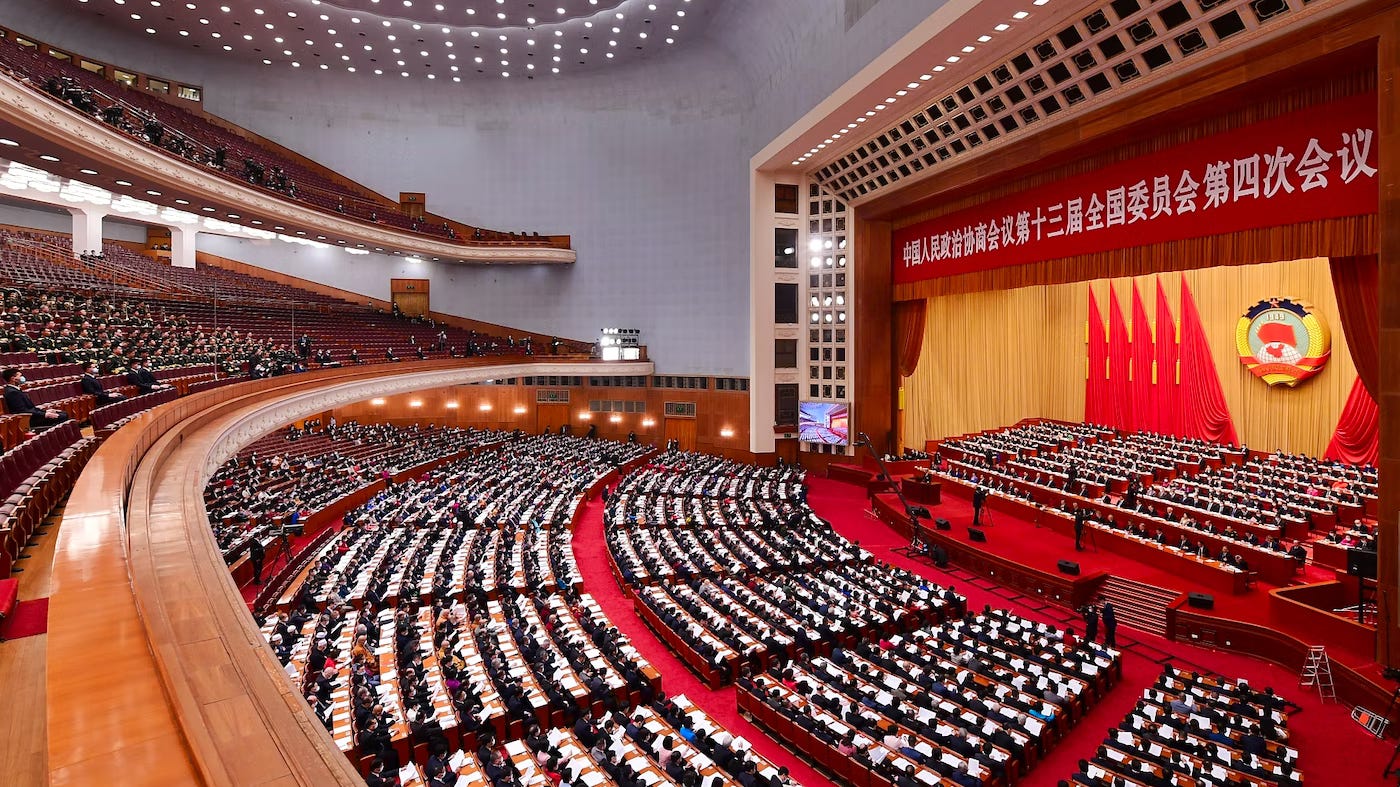The March report is now available, and you can choose to download the PDF version at the end of this post or conveniently read it on Substack.
Report outline
Two Sessions have concluded: key points to note
Watching China’s post-Covid recovery: what the key economic indictors tell us
China stock markets: index performances roundup
Company updates: noteworthy developments and financial results of Chinese companies
Trade idea of the month: a group of Chinese tech stocks trading below cash values
1. Two Sessions have concluded
The conclusion of China's Two Sessions did not yield any surprises, but there were notable takeaways worth mentioning.
GDP growth target of 5%. China's GDP growth target for 2023 has been set at 5%, which is lower than the 5.5% target set for 2022 when the country was under lockdown, disappointing investors who were hoping for a strong economic recovery. It appears to us that the new team wants to set a target that is easy to achieve so that they can demonstrate their ability to deliver results. Perhaps last year's significant margin of error in missing the target also prompted them to adopt a more cautious approach.
New financial bureau. China's financial regulatory system is undergoing a restructuring process, with plans to create a new regulatory body based on the China Banking and Insurance Regulatory Commission (CBIRC) that will absorb some functions from the People's Bank of China (PBOC) and the China Securities Regulatory Commission (CSRC). Consolidating regulatory functions into a single entity makes sense to us, as it not only promotes more effective oversight but also reduces overlap and turf-guarding behavior between agencies. The PBOC will be able to focus to monetary policies, which is similar to the US Federal Reserve's approach.
We don't believe that the restructuring of China's financial regulatory system will add to the regulatory pressure on fintech companies. From what we can see, the lack of new policies in the last several months suggests that this issue is behind us. There are even rumors that Ant Group may soon receive a license. Therefore, we see this restructuring as a move toward greater efficiency and effectiveness rather than as a means of increasing regulatory pressure.
New data bureau. As with the regulatory governance of the finance industry, data regulation in China is currently managed by multiple agencies, including the Cyberspace Administration of China, the Ministry of Industry and Information Technology, and the National Development and Reform Commission. The current distribution of regulatory functions seems disorganized, and centralizing them into one body would likely increase efficiency and consistency. Therefore, it makes sense to consider a consolidation of these agencies into a single entity.
While the exact scope of powers of the new regulatory body for data management in China is still unclear, there are some indications of its potential role. Among other functions, the new body is expected to establish and enforce data-collection and sharing rules for businesses, potentially including restrictions on certain kinds of consumer data collection or vetting of data shared by domestic companies with foreign partners for potential national-security breaches. Additionally, the body may investigate issues related to digital domains, such as algorithmic data manipulation or inducing internet addiction among minors, and identify data-security vulnerabilities that are prone to cyberattacks. Given the Chinese government's longstanding emphasis on the importance of data and its potential misuse, the creation of this new regulatory body is not surprising.
2. Watching China’s post-Covid recovery
China's economic recovery in 2023 appears to be underway, as evidenced by several encouraging economic indicators in the first two months of the year.




